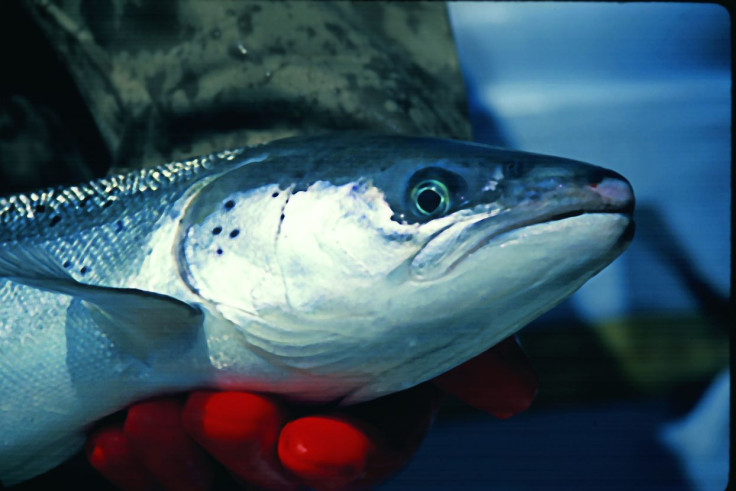Size Matters In Love Life Of Wild Atlantic Salmon

Turns out that the largest fish produces the most offspring. Larger salmons that spend up to four years at sea mate more and produce more babies, pointed out a new study.
Every summer, tens of thousands of these fishes migrate, from the Barents Sea to the Teno River in Finland, to spawn. This journey is a feat of endurance as these salmons have to navigate fast-flowing water, leap over obstacles and avoid predators and fishing nets to arrive at their spawning grounds, says Science Daily.
And the journey doesn’t end there. Upon arriving at their spawning grounds, these salmons have to fight for the possibility to mate with the members of the opposite sex. The largest fish produce the most offspring, reported the experts at the University of Helsinki.
The study is a part of a long-term monitoring program and its results are published in the journal Molecular Ecology.
The study
A tiny piece of fin tissue was removed for genetic fingerprinting of over 5000 adults and juveniles before they were released back into the wild. They also fitted a unique identification tag to the adult salmons. The scales were carefully sampled since they helped record annual growth cycles similar to tree rings.
“Great care was taken to not harm the fish. In fact, we have recaptured adults returning to spawn several years later and juveniles returning to spawn as adults,” Science Daily quoted Dr. Kenyon Mobley, the study’s lead author.
Why do larger salmon have more offspring?
Most of these fishes in Teno River spend up to four years at the sea before migrating back to breed. The more time these salmon spent at sea, the larger they grew. And while female salmon usually takes nearly 3 years to mature, the males return after just a year at sea.
Findings:
- For every year spent at sea, the females gain more than 4 kilograms of body weight and produce 60% more offspring
- Males gain nearly 5 kilograms of body weight and produce 200% more offspring. And for each year they spend at sea, they gain 60% more mates
- Spending more time at sea exposes them longer to predators, fishing and diseases and might be at an increased risk of dying before they get to spawn
- Salmon aren’t monogamous and can have up to eight different mating partners
- Larger salmon, especially males have a distinct advantage when it comes to choosing mates
"Knowing the reproductive contributions of different sized fish in this river section can help us to develop more accurate models of offspring production. These are needed for developing Teno salmon management guidelines," Science Daily quoted Professor Jaakko Erkinaro from Natural Resources Institute Finland.
© Copyright IBTimes 2025. All rights reserved.






















